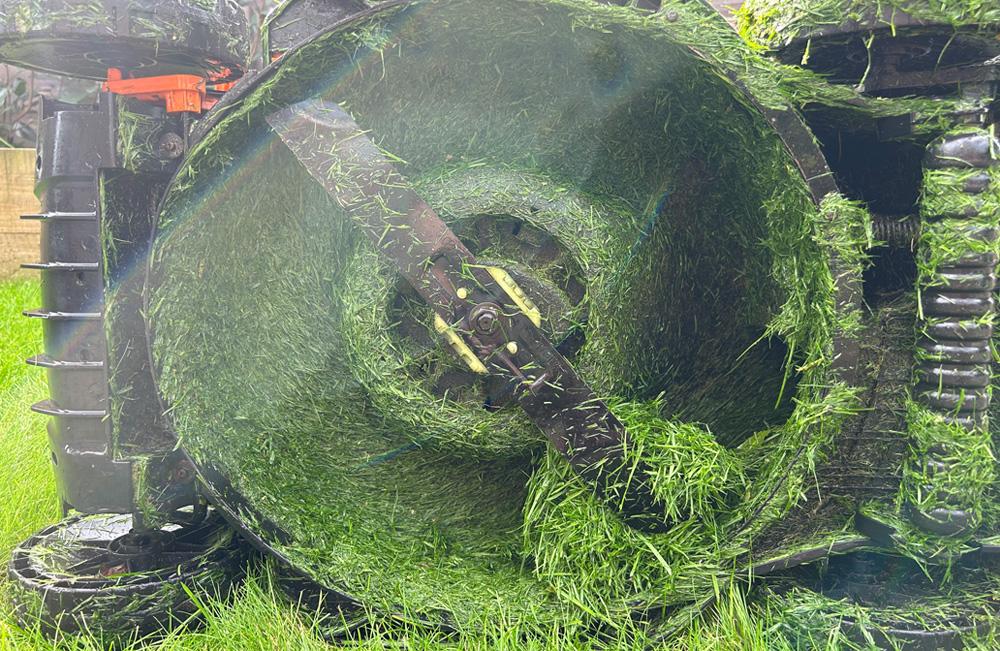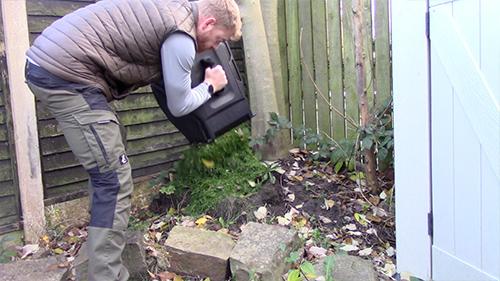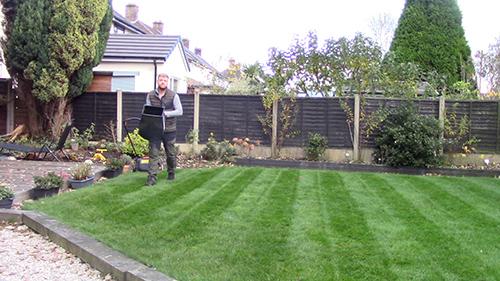
Created By
Matt Adams
Updated On
- February 29, 2024
Get FREE Exclusive Access
Keep your lawn pristine with exclusive tips, offers and insights that I only share with my private subscribers.
Latest Posts
What to do with grass clippings – reusing, disposing & dumping
- By Matt Adams
- February 29, 2024
Jump to
Get FREE Exclusive Access
Keep your lawn pristine with exclusive tips, offers and insights that I only share with my private subscribers.
Every time you mow your lawn you’re unconscious approach to grass clippings is probably to just check them in the bin.
That’s understandable but why not have a think about reusing them in different ways. After all, not everyone has access between the bins and the garden without going through the house. Meaning they could go everywhere if you need to traipse them through the lounge or hallways.
In this article I’m giving you 7 different things you can do with your grass clippings after mowing the lawn.
Add grass clippings to the compost heap
This is probably one of the most popular ways of reusing grass clippings. And definitely an easy way to recycle.
Add them to your compost heap and let them break down into reusable soil. Remember to turn the compost regularly though, because the ones at the bottom will break down much quicker than the ones at the top.
Then, when you have some nice fresh compost, you can use it in containers or along flower beds for some extra nutrients. You may even be able to use it as a top dressing for your lawn after doing an overseed. Just make sure it’s fine enough to spread and doesn’t contain too many stones.

Add grass clippings to your flower beds as mulch
It’s a common question..
Can grass clippings be used as mulch on my flower beds?
In short, yes, absolutely. The remains of your mowing contain a good level of nitrogen – not too much but enough to be beneficial to your plants shrubs and flowers or bulbs.
In fact, when used alongside leaves, you can protect the roots inside your beds throughout most of the Winter from any harsh frost.
I find the best time of year to do this is at the end of Autumn (see the table below that shows what to do at different times of the year).
Why?
Because it will help protect the roots of your plants during the cold Winter months. It’s especially effective for frosty days that could kill off things like Rosemary and other mediterranean style plants.
Simply, empty the box of grass clippings around the flowers in your flower beds. Also, you don’t need to worry about the Spring bulbs you have planted because they will work their way through the clippings (which will probably have decomposed by the time they come through).
Beware though…
Grass clippings have been known to create nettles. So, you might want to test it in one area of the flower bed first and see what happens the following Spring and Summer. If nettles come through in that area, you will know it’s come from the grass clippings.
Leave them on the lawn
I personally don’t like doing this. Especially in the Summer when I want my lawn to look it’s best. That doesn’t mean it can’t be done though. Leaving clippings on the lawn will provide nutrients into the soil.
My personal issue is that it’s a little unsightly until the grass actually decomposes. If you want to leave them on the surface, then you’ll want to install the mulching device that usually comes with your mower.
A mulching device will cut the clippings up really fine and means there’ll be fewer clumps.
Note, clumps of grass left on the surface can block the light getting to the actual grass. Essentially causing more harm than good.
Remember though, they won’t create new grass. You’l need grass seed for that

Use grass clippings to help fix bare patches in the lawn
Bare patches in the lawn can appear for many different reasons. from dog wee on the lawn to worm casts coming in late Winter. Either way you’ll probably want to fix them whenever they return.
The cut grass won’t help fix the patches on its own. You’ll need to mix it with some grass seed as well as a little top dressing. You could optionally apply some pre-seed fertiliser too but you’ll need to have not fed the lawn within the last 8-10 weeks.
Use them as animal bedding
If you have guinea pigs or hamsters, you can easily turn dead grass into hay by letting it dry out and putting it in the cage as a comfy bed for your beloved furry friends.
Aim to keep the bedding around 2-3 inches thick and be sure that any herbicides or fertilisers are long gone from the grass before using it as bedding. That means waiting approximately 6 weeks after feeding the lawn before using it as bedding.
Use as kindling in a fire pit (after drying them out)
This might not be as easy as it sounds.
If you dry them out properly, you could use them to get the fire going in your fire pit on a cool Summer’s night.
Note though, they do need to be fully dried out.
If you leave it in a heap, it probably won’t dry out fully. So it’s a good idea to store them in small clumps and regularly turn them inside out so that the middle gets dry too.
Dilute heavy clay soil with grass clippings
If you leave them on the lawn as mentioned above, it can help to improve the composition of the soil. This can be extra beneficial for heavy clay soil which needs breaking down so the grass seed grows faster.
On the other hand, you can mix them with some of your flower bed soil and it will help to improve the composition before using it in your plant pots or putting back into the flower bed.§
Now that’s given you some ideas to circulate your lawn’s off cuts, let’s take a look at some common questions I get asked i regards to fertiliser and weed killers.
Now, Your questions answered
How does Fertiliser affect your grass clippings?
In general, our lawn feed and fertiliser will not harm your compost if it doesn’t contain any form of herbicide. on the other hand, if you’ve used a weed and feed on your lawn or any form of selective weed killer, you should wait a minimum of 6 weeks before applying it to your compost heap.
If you are composting after fertilising, the best option here would be to use a 100% organic/pet-friendly option from a trusted company such as The Relentless Gardener. While these still contain nitrogen, phosphate and potassium, you can be sure the compost or any other soil won’t become contaminated further down the line.
Table: A monthly plan for your grass clippings
| Month | Grass clipping Disposal Method | Rationale |
|---|---|---|
| January | No mowing | Unless you’re a “short lawn fanatic” – you won’t have any |
| February | Add to compost | As the weather warms it willcompost up quicker |
| March | Add to compost; set some aside to dry (for bedding) | They will dry quicker and compost up quicker |
| April | Mulch and leave on lawn | It’s a good month to give the grass some added nutrients |
| May | Dilute with heavy clay soil on flower beds | A time when you might be weeding and turning soil in the beds – why not ix the clipping sin too |
| June | Add to compost heap | Summer sun is a great catalyst to breaking up the clippings quicker |
| July | Add to compost heap | Summer sun is a great catalyst to breaking up the clippings quicker |
| August | Use as mulch on flower beds | Grass clippings will help provide nutrients to the soil for the plants |
| September | Use as mulch on flower beds; add some to compost | Add ing some to compost will help it break up and be nutrient rich when using the same compost in pots |
| October | Use as mulch on flower beds | The clippings will protect the roots of flowers or bulbs and help them survive the cold harsh months |
| November | Put on the compost heap | They will break down over winter but much slower than in the Summer |
| December | No mowing (read more) | Unless you’re a “short lawn fanatic” – you won’t have any |

